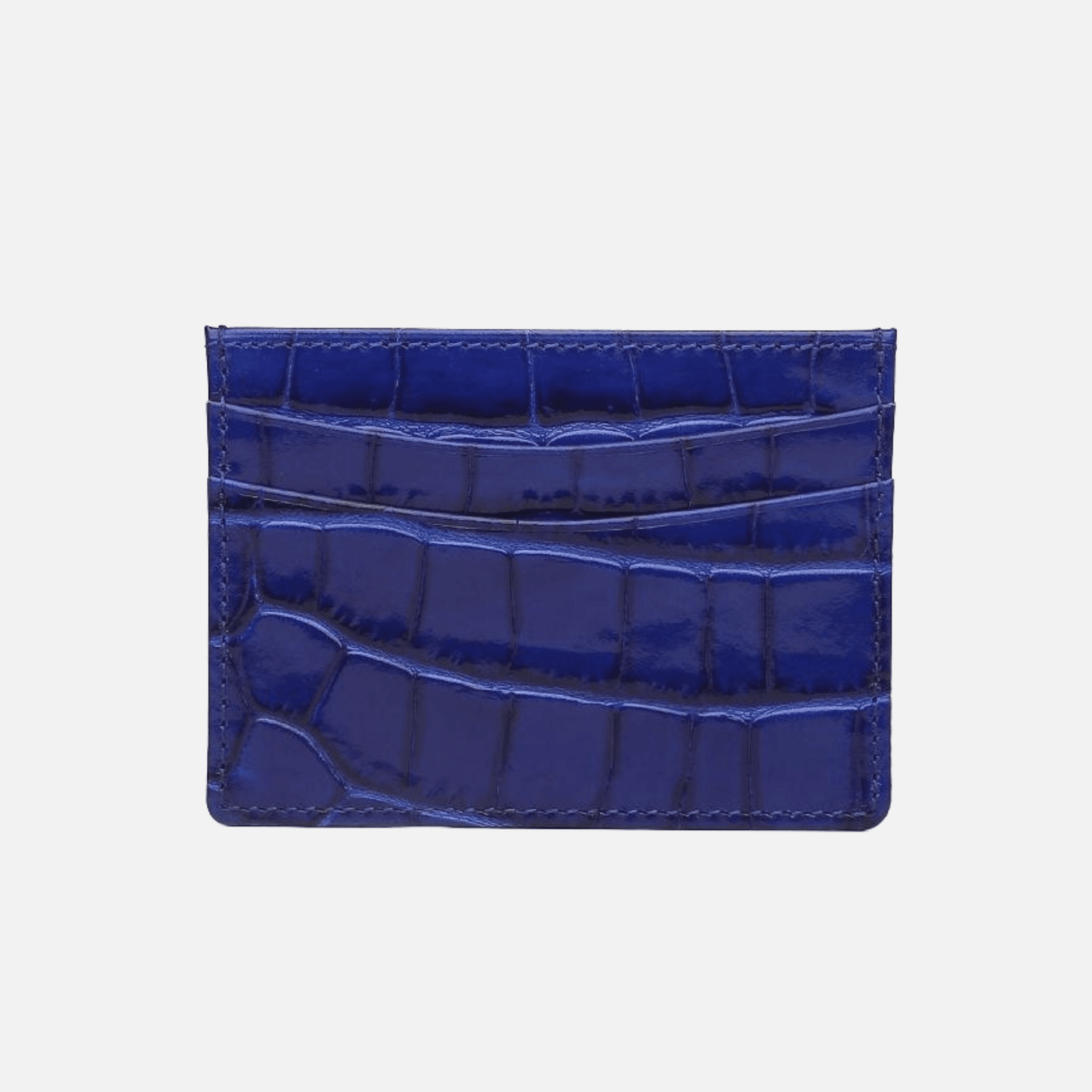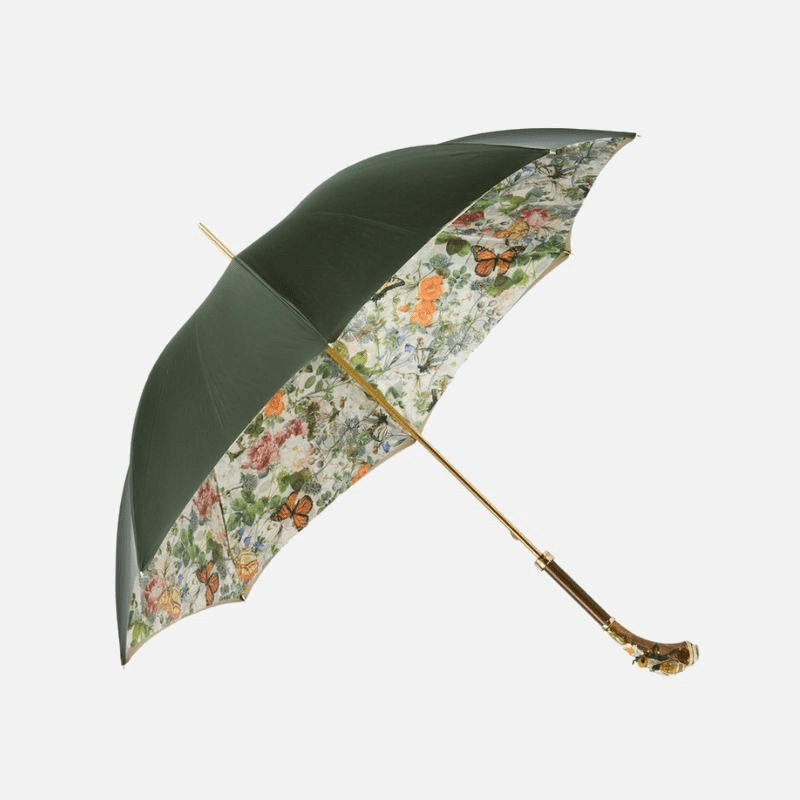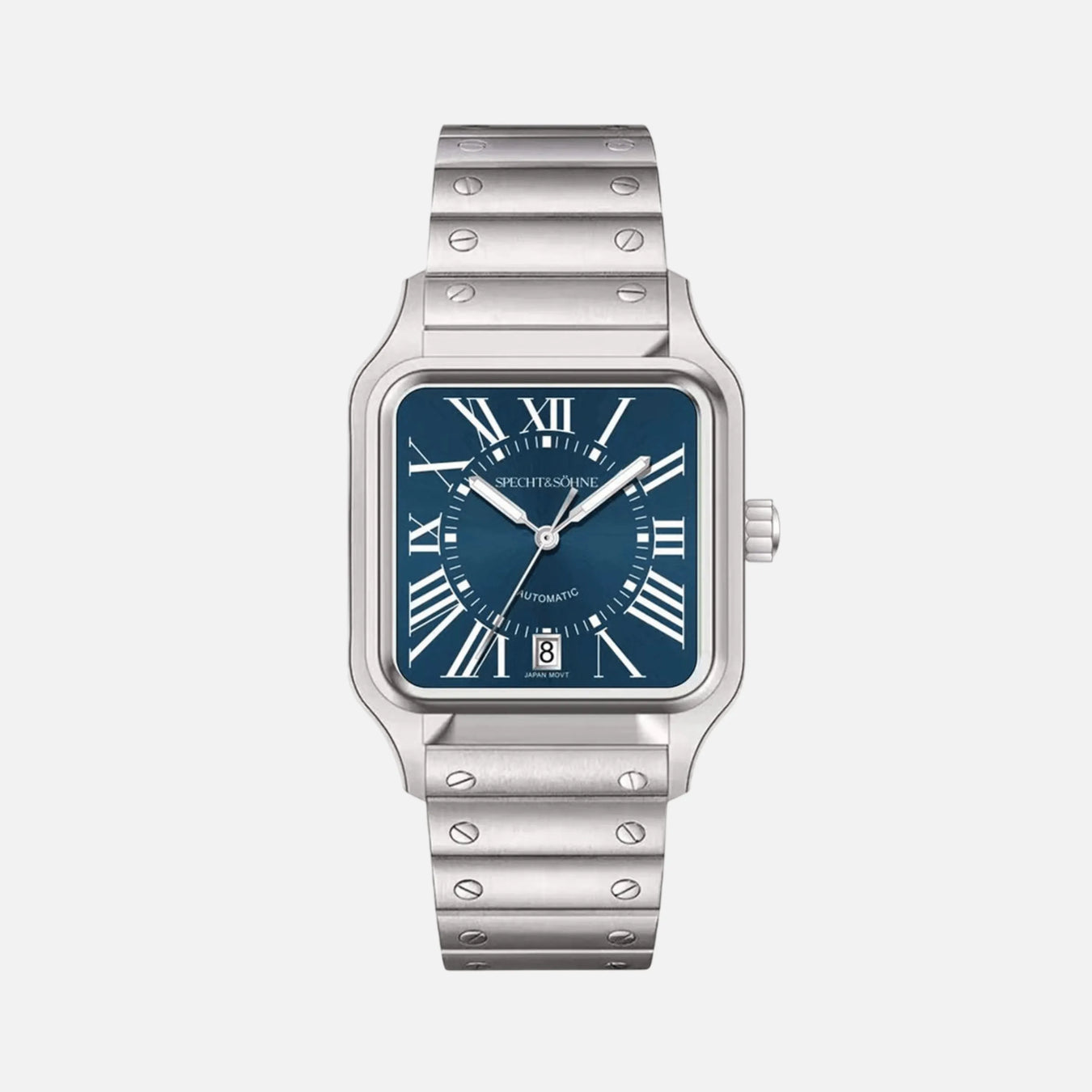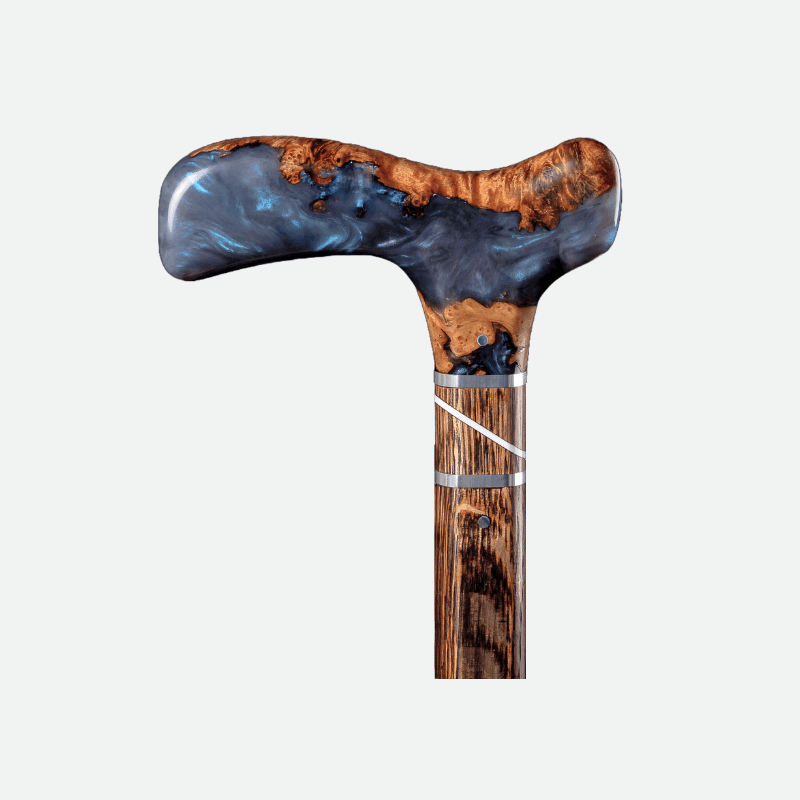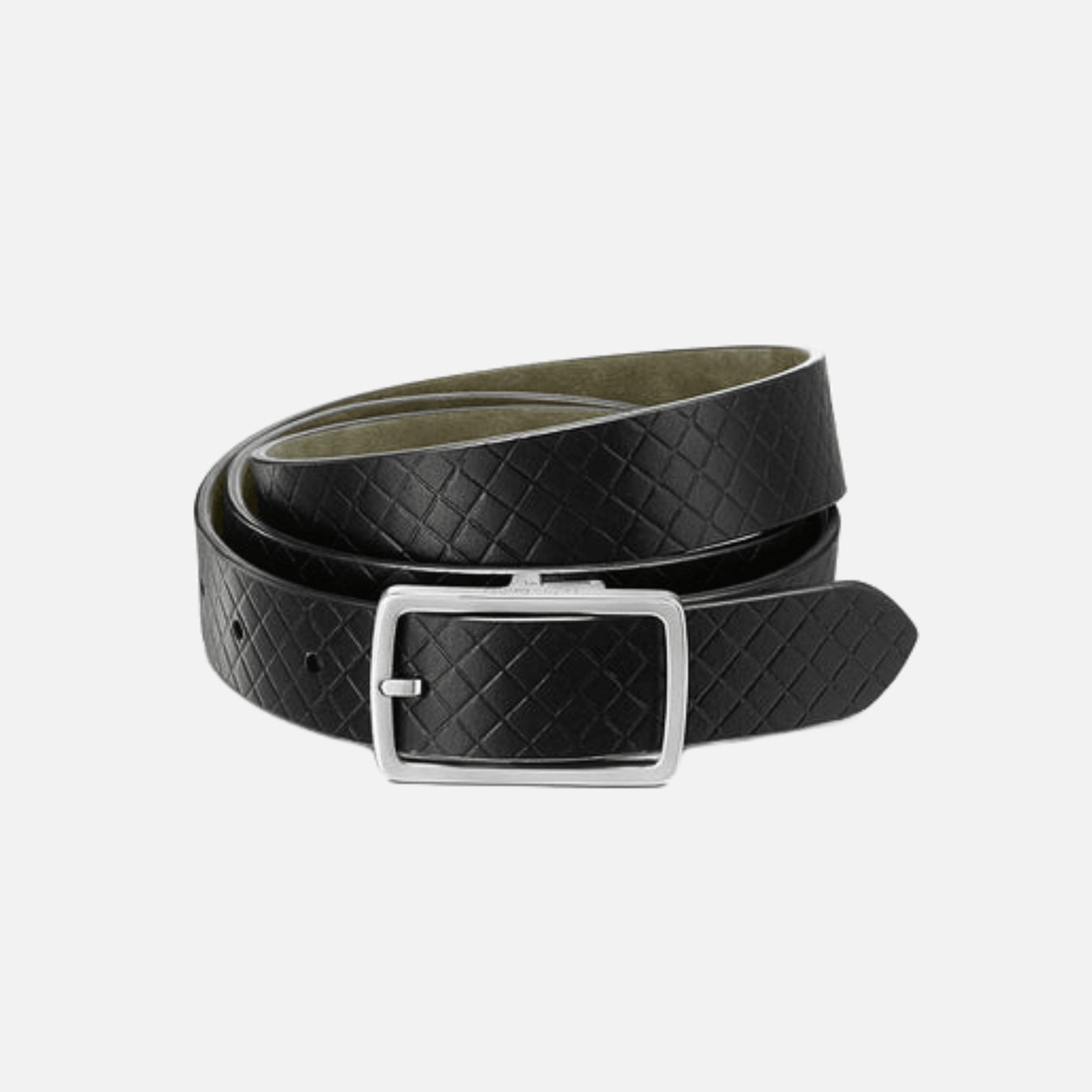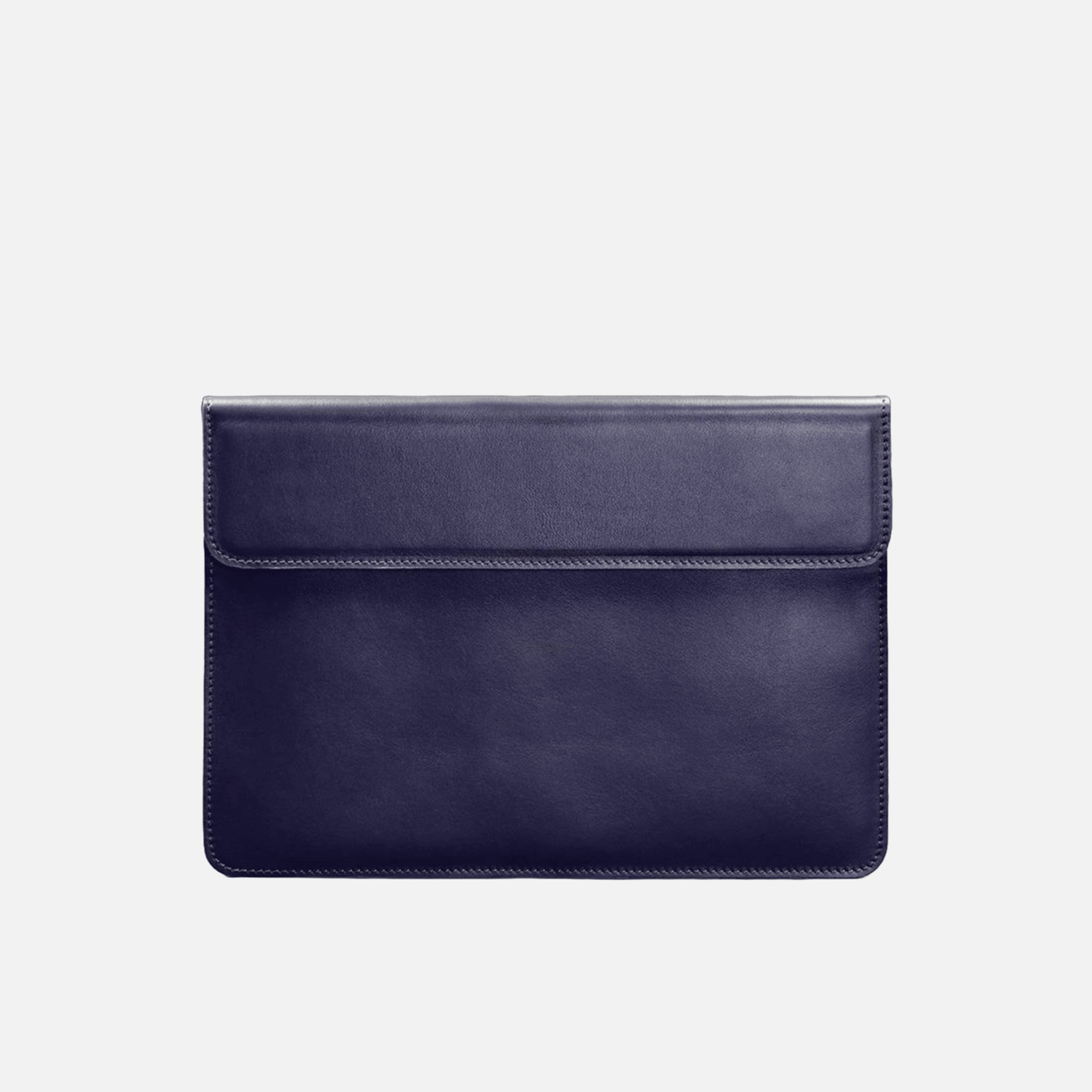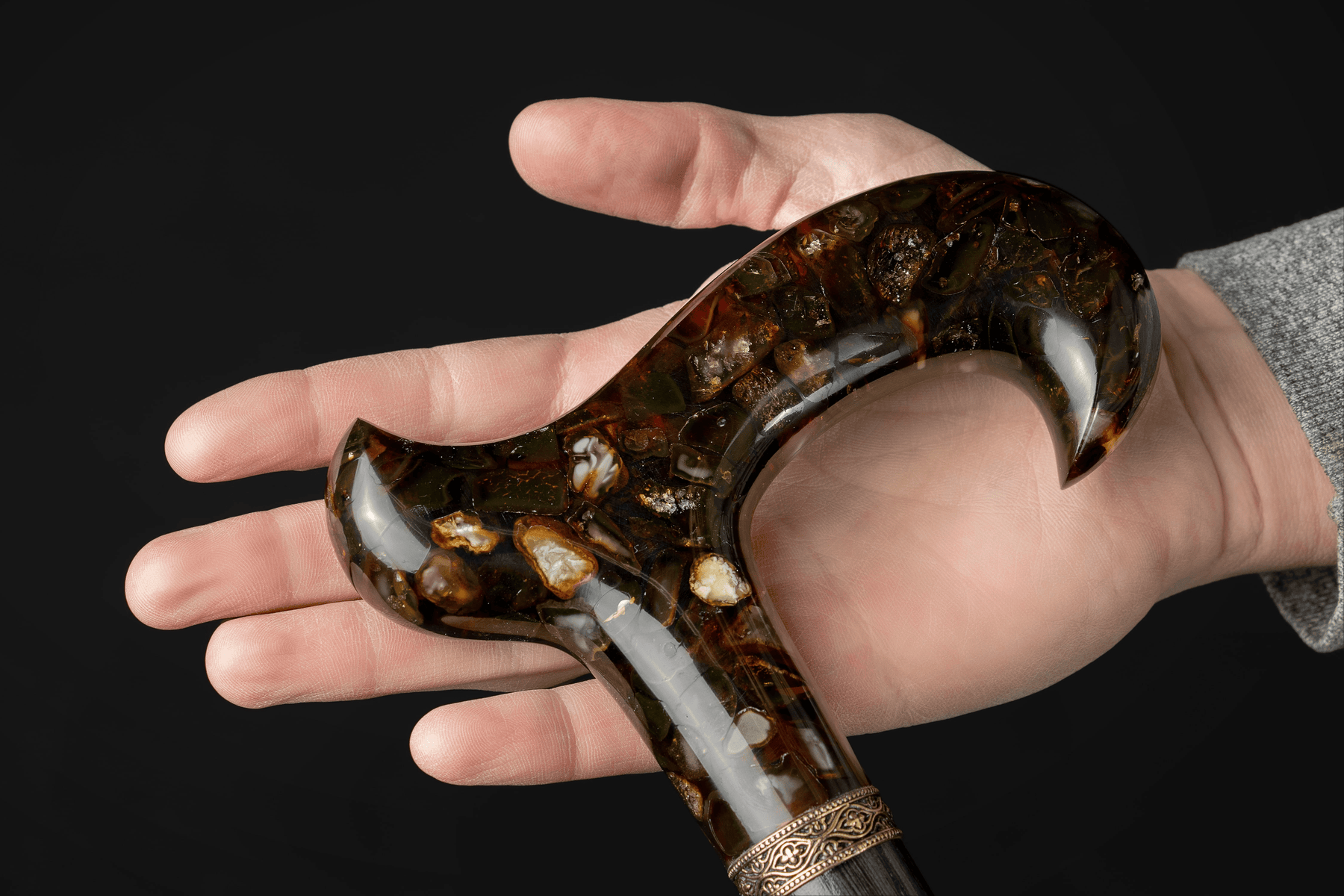
The Ultimate Guide to Choosing Your Ideal Custom Walking Cane
Introduction: The Importance of Selecting the Right Walking Cane
In a world where mobility is paramount, selecting the right walking cane is not just a matter of preference, but one of necessity. Walking canes have transcended their traditional role and are now a fusion of function and fashion—blending the essence of support with the elegance of craftsmanship. A custom walking cane is no longer a mere accessory; it’s a personal statement, a reflection of the user’s individuality and a nod to the seamless integration of 5 modern design trends in walking canes for enhanced mobility.
Choosing a custom walking cane is an intimate process, much like commissioning a piece of art. With a variety of options—handmade, made to order, and ranging from classic to contemporary trends in luxury walking cane design and aesthetics—each decision becomes crucial for ensuring comfort, stability, and style. Tailoring a cane to one’s personal use involves careful consideration of materials, grip, height, and even the inclusion of 3⁄4 inch rubber tips for our walking stick walking canes, which offer added safety and traction.
Moreover, walking canes have taken on new roles in the lives of their owners. They aren’t relegated to merely functional objects but are also seen as collectible items, often comparable to a set of large wooden chess pieces—luxury chess pieces that are not just played but displayed proudly. They are beautiful chess pieces, almost similar to a piece of heritage—a gift for dad, that serves a purpose beyond its initial intent.
Within this guide, users will find pertinent information gathered in our comprehensive FAQ and about us sections, equipping them with the knowledge to choose a custom cane that truly matches their lifestyle and personal taste. Each step of the journey is crucial, from selecting the raw materials to the final touches that make the cane truly unique. Thus, choosing the right walking cane is an investment in one’s autonomy and an expression of individuality.
Understanding the Various Types of Walking Canes
When selecting a custom walking cane, one must navigate an array of options to find the perfect match for their needs and aesthetics. From classic designs that exude elegance to contemporary trends that showcase modern ingenuity, walking canes come in various forms—each with unique features and benefits.
Standard Canes: Often featuring a simple, straight design with a curved handle, standard canes are the most common type. They offer essential support and are easy to use for most individuals.
Quad Canes: These canes come with a four-pronged base, providing greater stability for those who need extra support. They are ideal for people with significant balance issues.
Folding Canes: Portability is the main draw of folding canes, which can collapse into a more compact form, making them easy to travel with. They blend functionality with convenience effectively.
Walking Sticks: Typically more of a fashion statement, walking sticks may lack some of the support features of traditional canes but are often handmade and can serve as a unique expression of personality.
Seat Canes: Combining the functionality of a cane with the convenience of a temporary seat, these canes are perfect for individuals who may need to sit and rest periodically while on the move.
Specialty Canes: Incorporating modifications such as 3 4 inch rubber tips, these canes are designed for specific conditions or terrains, providing enhanced mobility on various surfaces.
Canes can also be a reflection of one’s personal style, with luxury options that feature beautiful craftsmanship. For enthusiasts, a cane might even resemble a set of large wooden chess pieces, making it a beautiful chess piece itself and a potential gift for a dad who values distinction and finesse.
Selecting from the modern design trends in walking canes means considering one’s lifestyle, mobility needs, and aesthetic preferences. Custom, made-to-order walking canes take these personal criteria into account to create a mobility aid that is as unique as its user. Whether one desires a simple, effective design or a luxury, artisan-crafted accessory, understanding the various types of canes is the first step toward enhanced mobility and personal expression.
Anatomy of a Walking Cane: Essential Components
A walking cane is not just a simple stick that one uses for support; it is a sophisticated aid that comes with various essential components, each serving a distinct function. Knowing the anatomy of a walking cane is crucial when choosing a custom one that fits individual needs, especially when considering handmade, made-to-order canes that reflect personal style and requirements.
Handle: The top part of the cane, where the user holds onto. Handles come in different shapes, such as the crook, Fritz, Derby, and ergonomic designs. The choice of the handle affects the comfort and grip of the cane.
Shaft: This is the long, straight part of the cane that supports the user’s weight. It can be crafted from various materials like wood, aluminum, or carbon fiber, often influencing the cane’s weight, durability, and aesthetic. Modern design trends include lightweight yet strong materials for enhanced mobility.
Collar: A decorative element that joins the handle to the shaft. It can be simple or elaborate, and in luxury walking canes, it is often made from precious metals or customized with intricate designs, from classic to contemporary aesthetics.
Tip: The bottom part of the cane that touches the ground. It is usually covered with a 3⁄4 inch rubber tip to provide traction and stability. Walking stick walking canes should have a durable tip to ensure safety and longevity.
Accessories: Canes may come with additional components, such as wrist straps for extra security or a built-in flashlight for better visibility. There are also whimsical accessories like a set of large wooden chess pieces that can be integrated into the design—a beautiful and unique gift for a loved one.
Understanding these key components will help anyone navigate through the world of walking canes, be it for enhanced mobility or as a fashion statement.
Material Matters: Choosing the Right Cane Material for Durability and Style
When selecting the perfect custom walking cane, understanding the significance of material is paramount for ensuring both durability and aesthetic appeal. The material not only influences the cane’s look and feel but also dictates its longevity and functionality.
Walking canes made from woods like oak, hickory, or walnut exemplify traditional craftsmanship and provide a sense of timeless elegance. These hardwoods are renowned for their sturdiness and can accommodate various design intricacies, making them perfect for individuals who appreciate classic style mixed with the durability required for everyday use.
For those inclined towards more novel and lightweight options, materials such as carbon fiber and aluminum offer a contemporary twist. These materials are at the forefront of modern design trends in walking canes. Carbon fiber, in particular, is recognized for its exceptional strength-to-weight ratio, offering unmatched resilience while being extremely light—a critical feature for enhanced mobility.
Users seeking a personalized touch might consider handmade canes that allow for detailed customization. These canes can incorporate elements like a set of large wooden chess pieces, incorporating luxury chess pieces into the cane’s design, serving as both a fashion statement and a nod to the user’s hobbies.
A key aspect of functionality often overlooked is the tip of the cane. A 3⁄4 inch rubber tip is a standard size that provides sufficient grip and stability on varied terrains. Our walking stick and walking canes tips are designed to be both practical and in keeping with the cane’s overall design.
Ultimately, when it comes to made-to-order canes, the material choice should align with the user’s lifestyle, personal fashion sense, and functional needs. Whether one favors the warm natural feel of wood, the sleekness of modern materials, or the unique appeal of handmade designs, there is a material that will suit every preference while adhering to the latest trends in luxury walking cane design and aesthetics.
Height and Weight Considerations for Optimal Support
When selecting a custom walking cane, one must consider height and weight to ensure it provides the optimal support necessary for the user. The proper length of the cane is crucial; it should reach from the floor to the wrinkle of the wrist when the arm is at one’s side. This corresponds to roughly half the user’s height in inches. Handcrafted walking canes can be made to order to fit these precise measurements, guaranteeing comfort and ergonomics.
In terms of weight, the cane itself should be sturdy enough to support the user’s weight without bending or breaking. Most canes are designed to comfortably support persons up to 250 pounds, but those who require a stronger support might opt for a bespoke option crafted with durability in mind. Features like a 3⁄4 inch rubber tip can offer both stability and protection for the walking stick, enhancing the user’s confidence in the support the cane provides.
- Use the “about us” or “FAQ” section of a manufacturer’s website to confirm the weight rating of their canes.
- Inquire if they offer services like “handmade” or “made to order” for personalized height and weight specifications.
- Explore “5 modern design trends in walking canes for enhanced mobility” that may influence your choice.
- Consider “from classic to contemporary trends in luxury walking cane design and aesthetics” to find a style that suits your personal taste.
Customers should also remember that a walking cane doubles as an accessory. From a set of large wooden chess pieces, luxury chess pieces, and beautiful chess pieces to a gift for dad, many manufacturers offer aesthetic touches that combine function and style. The cane’s appearance and structure contribute to its overall support and effectiveness, making these considerations as substantial as the height and weight factors.
Grip and Handle Designs: Comfort Meets Functionality
When choosing a custom walking cane, the grip and handle are not merely about aesthetics; they are pivotal in providing comfort and ensuring the cane’s functionality. Handmade grips offer a personal touch and can be tailored to the individual’s hand shape and size, reducing the risk of strain or discomfort during extended use.
Ergonomic designs are at the forefront of comfort, with contours that naturally fit the human grip. Moreover, made-to-order canes allow for adjustments to handle thickness and shape, catering to specific needs such as arthritis or limited dexterity.
Key considerations for grip and handle include:
Material: Softwoods provide comfort for gentle strolls, while hardwoods offer sturdiness for increased support. For additional luxury, materials like leather or even a set of large wooden chess pieces can be incorporated to create a unique grip.
Shape: From classic Derby handles to Fischer handles, designed for orthopedic support, the shape of the handle should align with the user’s requirements for grip comfort and wrist support.
Balance: A well-designed handle should distribute weight evenly across the shaft to aid in balance and prevent unnecessary strain on the wrist.
Add-ons to enhance the walking cane experience:
Straps: For added security and convenience.
3⁄4 inch rubber tips: These provide enhanced traction and stability, essential for the walking stick walking canes’ tips to function effectively across varied terrains.
Understanding modern design trends in walking canes can significantly affect the user’s mobility and style. From classic to contemporary trends in luxury walking cane design, one can personalize the perfect balance between elegance and comfort. These gripping solutions illustrate that functionality and comfort can seamlessly blend, making each step for the cane user secure and stylish, a truly beautiful chess piece in the ensemble of walking aids.
Cane Tips and Bases: Stability on Different Terrains
For individuals who rely on walking canes for mobility and steadiness, the choice of cane tips and bases is vital for ensuring safety and comfort on various surfaces. With a diverse range of available options, users can select from classic designs to innovative ones that reflect the latest in modern design trends in walking canes. Handmade and made to order, walking cane tips and bases can be customized to meet the specific needs and preferences of the user.
The 3⁄4 inch rubber tips for walking stick and canes are a standard choice that offers good traction on smooth surfaces like indoor flooring. These tips reduce the risk of slipping and are relatively easy to replace once worn out. For those who prefer a bit more stability or are frequently traversing rough or uneven terrains, such as cobblestones or gravel, a larger base may be desirable.
- Quad-cane tips provide a larger footprint and allow the cane to stand upright without being held.
- Tripod tips offer a balance between the standard single tip and the more stable quad tip.
Walkers encountering slippery conditions may benefit from cane tips with retractable spikes. These spikes can be engaged to penetrate ice and give a secure grip when walking outdoors during winter.
For those who appreciate luxury and aesthetics, from classic to contemporary trends, cane bases can be crafted from beautiful materials such as a set of large wooden chess pieces, transforming the cane into not just a functional tool but also a striking accessory.
Ultimately, the right cane tip or base enhances a user’s stability and confidence across a variety of terrains. Users should consider the types of surfaces they walk on most frequently and select a tip accordingly. A custom walking cane, with a well-chosen tip or base, bridges the gap between necessity and style, empowering its user with independence and flair.
Customization Options: Personalization for Aesthetic and Practicality
When selecting a custom walking cane, the ability to tailor its appearance and functionality to one’s preferences is a central benefit. Modern design trends in walking canes have stretched from classic to contemporary, allowing one to align their choice with personal style and the demands of enhanced mobility.
Personalization begins with aesthetics—designs can range from the understated elegance of large wooden chess pieces, reminiscent of luxury chess pieces, to the bold flair of bespoke patterns and colors. The choice of materials is broad, spanning from traditional woods to high-tech alloys, ensuring that both the look and weight of the cane meet the user’s comfort and style requirements.
Practical customization involves adapting the cane for ease of use and safety features. The walking stick can be made to order with varying lengths and equipped with specialized grips to reduce hand strain. Moreover, the inclusion of 3⁄4 inch rubber tips for walking stick walking canes is essential for stability and to prevent slippage. These tips can be swapped out depending on the user’s environment, ensuring maximum support.
For those looking to present a walking cane as a heartfelt gift, handmade options offer an element of craftsmanship and thoughtfulness that mass-produced items cannot match. A unique cane, perhaps engraved or adorned with a motif that holds special significance, can become a cherished possession and even a family heirloom.
In summary, customization of walking canes spans beyond mere utility. It’s the harmonious blend of aesthetic allure and practical adaptability that transforms a simple aid into a personal statement and an extension of one’s mobility and lifestyle.
The Process of Crafting a Custom Walking Cane
Crafting a custom walking cane is more than a mere manufacturing process; it is an art form that marries functionality with personal expression. This process involves several meticulous steps to ensure the cane is not only aesthetically pleasing but also provides the support and durability required for enhanced mobility.
Firstly, the production of a custom walking cane begins with a detailed consultation. Artisans gather information about the user’s specific needs, preferences in style, and material choices. During this phase, elements like the height of the user, handgrip size, and weight-bearing capacity are all taken into account.
Following the consultation, the design phase commences. Here, artisans infuse 5 modern design trends in walking canes with the client’s vision, ranging from classic to contemporary trends in luxury walking cane design and aesthetics. A blueprint for the walking cane is then meticulously drafted before any craftsmanship begins.
Once the design is finalized, the crafting process begins. Artisans use a blend of traditional techniques and modern technology to shape the base materials into a functional yet beautiful piece. Handmade attention to detail ensures that every curve, joint, and finish reflects both quality and artistry.
After the initial construction, accessories like 3⁄4 inch rubber tips for our walking stick walking canes are attached to enhance the cane’s grip and stability. For those looking for an extra touch of elegance or a meaningful gift for dad, a set of large wooden chess pieces, luxury chess pieces or beautiful chess pieces can be incorporated into the cane’s design.
Finally, the finished product undergoes rigorous testing to ensure it meets stringent quality standards. Only then is the custom walking cane made to order and ready to become an extension of the person’s lifestyle, promoting not just mobility but also a sense of pride and sophistication.
Assessing Your Mobility Needs: A Step-by-Step Guide
When selecting the ideal custom walking cane, individuals must critically assess their mobility requirements to ensure the enhancement of their movement and comfort. This step-by-step guide is designed to assist in determining those needs effectively.
Identify the Primary Purpose: Start by pinpointing the main reason for needing a cane. Is it for balance, weight support, or both? Understanding this will influence the type of cane required, whether it should have a single tip or multiple for added stability.
Consult with a Health Professional: Engaging with a physical therapist or a doctor can provide insights into the level of support needed. They might recommend special features like an adjustable height or 3⁄4 inch rubber tips for walking stick walking canes, which provide better grip and stability.
Evaluate Your Lifestyle: Consider daily activities. If you move through different terrains or travel frequently, a lightweight, foldable cane might be the best option. Those who appreciate aesthetics might explore the latest trends in luxury walking cane design or even consider items like a set of large wooden chess pieces, luxury chess pieces as a beautiful and unique gift to accompany their purchase.
Measure for Size: A cane must have the correct height for proper use. When standing upright, the top of the cane should reach the crease on the inside of your wrist. Custom, made-to-order canes cater to this personalization need.
Understand Your Grip Strength: Your cane’s handle is crucial for comfort and control. Users with limited hand strength might prefer a handle designed to distribute weight evenly over the palm.
Fashion and Functionality: Assess whether you want the cane to make a statement about your personality. Are you looking for something that reflects contemporary design trends or a classic, handcrafted look? Custom canes satisfy such niche demands with precision.
By carefully considering these aspects, one can select a walking cane that best aligns with their mobility needs and personal style, ensuring the cane is not merely an aid but also an extension of their identity.
Health and Comfort: How the Right Cane Can Improve Your Life
Selecting the ideal walking cane is not merely about mobility; it’s about enhancing one’s quality of life through improved health and comfort. A custom cane that fits perfectly into your life can transform your daily activities by providing the support and stability you need.
The right cane offers significant health benefits, especially for individuals with mobility challenges. By distributing weight away from weaker areas, it alleviates pressure on the hips, knees, and ankles, reducing pain and preventing injury. Moreover, a custom cane tailored to your body’s measurements ensures proper posture, which can relieve back pain and other musculoskeletal discomforts.
Comfort is equally essential. A cane with the right grip and height minimizes strain on the hands and wrists. For example, arthritis sufferers can find relief with custom grip shapes that reduce joint stress. Furthermore, choosing a cane that reflects personal style—whether it adheres to modern design trends in walking canes for enhanced mobility or showcases beautiful chess pieces as an ornamental feature—increases the likelihood of consistent use, which is critical for safety and mobility.
Here are some points to consider for blending health and comfort into your custom cane choice:
- Fit for Purpose: Canes with 3⁄4 inch rubber tips provide traction and stability, reducing the chance of slips and falls.
- Custom Design: From contemporary to classic trends in luxury walking cane design, select a cane that complements your lifestyle and aesthetics.
- Material Matters: Walking canes made to order from premium materials like hardwood provide durability without compromising on elegance.
- Ergonomics: Handles should be designed to fit your hand’s contours, offering support without causing discomfort.
By paying attention to these details, you embrace a set of aids that appreciates the interplay between ergonomics and aesthetics, ensuring that your custom walking stick not only enhances mobility but does so with your utmost comfort in mind.
Balancing Cost with Quality: Investing in a Long-Lasting Cane
When exploring the market for a custom walking cane, it’s crucial to balance the cost with the quality to ensure a worthwhile investment. A handcrafted cane may carry a higher price tag due to the meticulous attention to detail involved in its creation. Patrons should realize that investing in a high-quality cane means investing in durability, comfort, and style that can endure the test of time.
Firstly, it’s advisable to consider handmade canes crafted by skilled artisans. Such canes are not only functional but often also embody the latest design trends, from classic to contemporary luxury walking cane aesthetics. The use of premium materials and the inclusion of personal touches make these canes unique and tailored to individual needs.
Looking into made-to-order options presents an opportunity to select specific features that enhance mobility and comfort. Choose from a variety of modern design trends in walking canes, including adjustable shafts, ergonomic handles, and the integration of lightweight materials. Additionally, features like 3⁄4 inch rubber tips can significantly extend the cane’s life by protecting the cane from wear and contributing to safer navigation.
Cost-conscious consumers shouldn’t overlook accessories and complementary items that can add value to their purchase. A set of large wooden chess pieces, luxury chess pieces, or beautiful chess pieces could make for an excellent gift for dad or any loved one, demonstrating thoughtfulness and the desire for artisanal quality.
In conclusion, when selecting a custom walking stick, consider the long-term benefits of a well-crafted cane. Though the initial investment may be higher, the lasting quality and personalized experience far outweigh the extra expense. Always consult the ‘about us’ or ‘FAQ’ sections when shopping to gather more insights on the craftsmanship and customer service that accompany your chosen product.
Accessorizing Your Cane: From Function to Fashion
Walking canes have evolved beyond mere functional aids for mobility; they now embody a seamless blend of utility and style. Accessories are pivotal in this evolution, not only enhancing the cane’s functionality but also making a fashion statement. From 3⁄4 inch rubber tips to an extensive array of custom adornments, a cane can be both an essential tool and an expression of personal taste.
3⁄4 Inch Rubber Tips: Safety is paramount when it comes to walking aids, and the right tip can provide the necessary traction. Our walking stick walking canes come with rubber tips that are designed to grip surfaces and promote stability.
Handmade Customization: In the realm of handmade, made-to-order canes, personal flair is front and center. A cane can be crafted to reflect one’s personality, whether through engravings, hand-painted designs, or incorporating materials like silver and crystals for a touch of luxury.
Chess Pieces Accessory: For the discerning individual who relishes in the grandeur of game and tradition, a set of large wooden chess pieces can serve as a unique cane topper. These beautiful chess pieces are not just a gift for dad, but a statement piece that distinguishes a regular cane from a luxury accessory.
Modern Design Trends: Embracing 5 modern design trends in walking canes can transform an aid into a trendy accessory. From classic to contemporary trends in luxury walking cane designs, there is a plethora of options to match any outfit or occasion.
Accessorizing a cane incorporates the convergence of fashion with the ever-important aspect of support and mobility. It can mirror the latest design aesthetics, satisfy practical necessities, and reflect individual persona, thereby serving as an extension of one’s self in the most sophisticated way.
Legal and Accessibility Considerations when Using Your Cane
When incorporating a custom walking cane into daily life, it is vital to recognize both legal and accessibility aspects to ensure conformity and ease of use. The Americans with Disabilities Act (ADA) outlines specific provisions for assistive devices, including walking canes. Adhering to these guidelines is crucial for those who rely on a cane for mobility.
Legal Rights: Individuals using walking canes are protected under the ADA, which entitles them to access public spaces without discrimination. This includes the right to bring a mobility aid into locations such as restaurants, shops, and public transportation.
Cane Specifications: While customization is a key feature of bespoke canes, it’s essential to ensure that a handmade cane conforms to safe design practices. For example, employing a 3⁄4 inch rubber tip for walking stick walking canes is not only about crafting a made-to-order accessory but also about maintaining the cane’s stability and preventing accidents.
Accessibility in Public Spaces: Users should be aware of the availability of ramps, lifts, and other facilities designed for easier navigation. Whether assistance is required for traversing uneven surfaces or negotiating stairs, it’s imperative that one’s cane usage aligns with existing accessibility features.
Understanding the legal and functional parameters surrounding cane use is an integral part of the selection process. From classic to contemporary trends in luxury walking cane design, aesthetics should not overshadow the necessity for a cane to be well-suited for its environment. For instance, selecting a cane that reflects the 5 modern design trends in walking canes for enhanced mobility ensures that the walking cane is both stylish and functional.
Moreover, cane accessories should be chosen with care. Whether opting for a set of large wooden chess pieces as a luxury chess pieces gift for dad or discerning between beautiful chess pieces, users should consider how such choices impact the cane’s utility and adherence to legal standards. It is about us, as users and patrons, to prioritize accessibility and legality in our cane choices just as much as we celebrate personal style and craftsmanship.
Remember, a cane not only serves its owner by providing support but should also seamlessly integrate into society’s framework for accessibility.
Safety Tips for First-Time Cane Users
When first-time cane users embark on integrating a custom walking cane into their daily lives, safety is paramount. The process begins by selecting a cane that not only fits their style from classic elegance to modern design trends but also provides the stability and support needed for enhanced mobility. Handmade, made-to-order canes cater to the unique needs of each user, and choosing the right one is a step towards a safer walking experience.
First, ensure that the cane is the correct height. A cane that is too tall or too short can affect balance and cause strain. The elbow should be at a comfortable angle of about 15 degrees when holding the cane. For custom canes, providers often offer guidance on how to measure for the ideal fit, making it easier for users to make an informed choice.
Next, it is crucial to inspect the cane, especially the tip, before each use. Quality canes often come equipped with 3⁄4 inch rubber tips that provide traction and stability. Over time, these tips can wear out and should be replaced to maintain safety. Many manufacturers offer replacement walking stick walking cane tips, and keeping spares handy is advisable.
When using the cane, it’s important to hold it on the side opposite the weaker or injured leg. This setup provides maximum support and aids in an even gait. When ascending or descending stairs, users should remember to lead with their stronger leg, with the cane moving together with the weaker leg.
Moreover, just as a set of large wooden chess pieces showcases the attention to detail in a luxury chess set, so too should the cane user pay attention to the quality and craftsmanship of their cane. Beautiful, well-constructed canes are not just a gift for dad; they’re an investment in one’s safety and mobility.
For individuals unaccustomed to using a cane, it is advisable to practice in a safe environment before venturing out. Consider asking a healthcare professional to assess your walking pattern and provide personalized advice on cane usage.
While custom canes align with personal tastes, from luxury aesthetics to modern design trends, they also serve as a vital tool for secure and independent movement. Keeping these safety tips in mind ensures that first-time cane users enjoy both the fashion and function of their new mobility aid.
Where to Purchase Your Custom Walking Cane: Finding a Reputable Maker
When searching for a custom walking cane, it is essential to find a craftsman who not only understands the intricate blend of functionality and style but also respects the importance of producing a high-quality, handmade item. A reputable maker will provide extensive information about their crafting process, materials used, and customization options on their website. Look for an “About Us” or “FAQ” section to gain insight into their expertise and dedication to craftsmanship.
Begin by exploring specialists who focus on handmade or made-to-order walking canes. Craft fairs, boutique stores, and online marketplaces dedicated to artisanal goods are prime spots to discover unique canes. Additionally, it is beneficial to examine feedback from previous customers to ascertain reliability and satisfaction.
Consider the latest in cane design and aesthetics:
- Seek artisans who are well-versed in current trends, for example, 5 modern design trends in walking canes for enhanced mobility, to ensure you are getting a product that is not only stylish but also provides the support needed.
- Investigate makers with a range that encompasses classic to contemporary trends in luxury walking cane design, thus offering a broader selection to suit your personal taste.
Moreover, inquire about additional accessories and customization elements, such as 3⁄4 inch rubber tips for our walking stick walking canes tips. These components can significantly improve the cane’s functionality and longevity.
For those looking for a cane that doubles as a statement piece, consider craftspeople who offer additional luxury items, such as a set of large wooden chess pieces or beautiful chess pieces – perfect as a unique and thoughtful gift for dad or any loved one who appreciates fine detailing.
In summary, conduct thorough research, read reviews, verify the quality of materials, and ensure there is a clear line of communication with the maker before making your purchase. This will guarantee that your custom walking cane is not only a supportive tool but also a reflection of your personal style and needs.
Conclusion: Walking Tall with Your Ideal Custom Cane
Selecting a custom walking cane is not merely a practical decision for enhanced mobility but also an expression of personal style and an extension of one’s identity. Walking canes have evolved substantially, blending classic elegance with contemporary trends. From designs that reflect the beautiful intricacy akin to a set of large wooden chess pieces to those that adopt the minimalist approach of modern design trends in walking canes, the choices are boundless.
One should never underestimate the importance of a good-quality cane. With a made-to-order cane that fits all your requirements, not only does walking become more secure and comfortable, but it also elevates one’s confidence. It’s no longer just a support tool; it’s a statement piece. The luxury of having a handmade cane means that every curve, notch, and detail is crafted with care, reflecting the personality and needs of its user.
When considering 3⁄4 inch rubber tips for walking stick canes, selecting the right one can significantly improve your walking experience. These tips ensure stability and safety, allowing you to step firmly and with certainty. After perusing our FAQs and learning about us, our dedication to providing the perfect balance of aesthetics and function becomes apparent.
Whether you gift a bespoke cane to a cherished father figure, symbolizing both strength and finesse, or you commission a delicately carved piece for your use, the outcome is the same: empowerment. With your virtual guide at hand, you now possess the knowledge to choose a walking cane that isn’t just a mobility aid but a companion.
By embracing the blend of luxury, design, and personalization, you are ready to walk tall with your ideal custom cane, transforming each step into a stride of pride and resilience.

